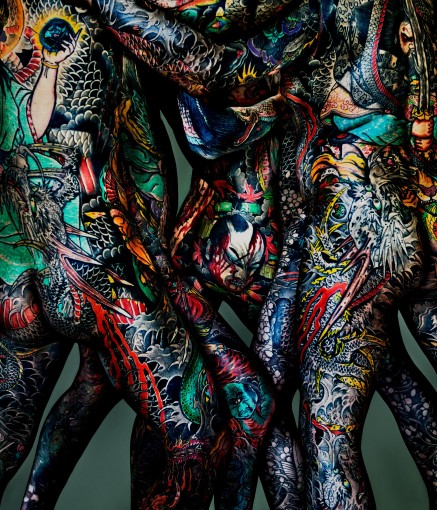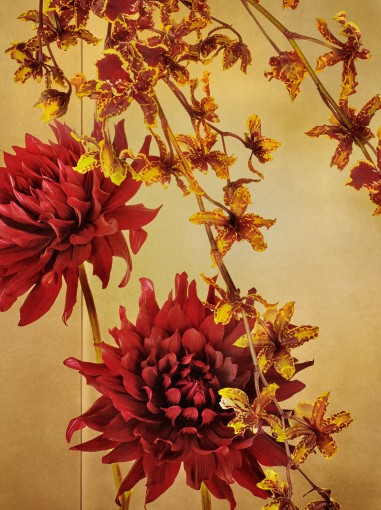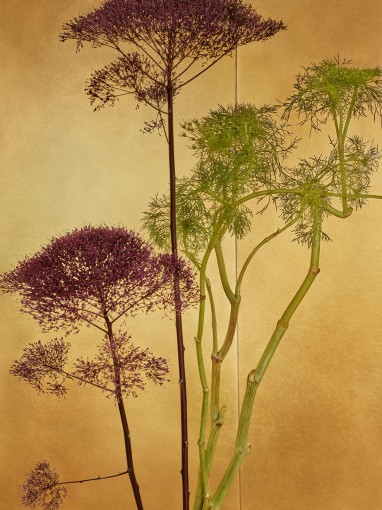Mario Testino’s 2019 series East explores hidden art traditions of Japan. The series is divided into Japanese flowers on lustrous golden screens and vividly tattooed men, intricately entwined. Through the distinctive lens of Testino, these dazzling images capture two Japanese traditions at their most vibrant.
Each man in these pictures was tattooed by the most famous Irezumi tattoo artist in Japan, Horiyoshi III. As a master of the traditional Irezumi technique, which translates as ‘inserting ink’, Horiyoshi III is the second tattooist to be granted this name, an honorific title that passes from master to apprentice. Today he is legendary for his artistry, particularly as he tattoos with no plan in advance, improvising as he goes, relying on his knowledge, skill and instinct. The special Nara ink requires a painful and time-consuming process, resulting in elaborate designs the tattooist controls, rather than the client. Tattoos are discriminated against in Japan and cannot be visible in public. At the beginning of the Meiji period, in the late 19thCentury, the government outlawed tattoos, and Irezumi became associated with criminality and the Yakusa (Japanese mafia). In portraying the artistry of the tattoos, bodies interlocked, Testino exposes this incredible tradition in all its glory.
The flower still lifes are inspired by traditional ‘Ukiyo-e’, or “pictures of the floating world”, one of the most admired genres of Japanese art and typically created using woodblock prints and painting. Each of the seasonal flowers captured by Testino in this body of work signify distinct ideas, such as truth, splendour, humbleness and sincerity, culminating in a floral display rich in Japanese heritage. The backdrop of the golden screens has a reflective effect, showcasing the delicacy of the flowers. Initially used as room dividers, these screens developed into luxury ornaments used for ceremonial occasions in Japan.
Widely regarded as one of the most influential fashion and portrait photographers, Mario Testino is responsible for the creation of emblematic images, transmitting emotion and energy in an open and intimate way, to document people all over the world.









